| WOMEN’sSUFFRAGE INTRODUCTION | DESCRIPTION |
| WOMEN’s SUFFRAGE INTRODUCTION | Women’s suffrage is the right of women to vote in elections. Beginning in the mid-19th century, aside from the work being done by women for broad-based economic and political equality and for social reforms, women sought to change voting laws to allow them to vote. National and international organizations formed to coordinate efforts towards that objective, especially the International Woman Suffrage Alliance founded in 1904 in Berlin, Germany), as well as for equal civil rights for women. Many instances occurred in recent centuries where women were selectively given, then stripped of, the right to vote. The first place in the world to award and maintain women’s suffrage was New Jersey in 1776 though in 1807 this was reverted so that only white men could vote. |
| WOMEN’s SUFFRAGE MOVEMENT IN THE US – BIRTH OF AN IDEA | While on her honeymoon in London to attend a World’s Anti-Slavery convention, Elizabeth Cady Stanton met abolitionist Lucretia Mott, who, like her, was also angry about the exclusion of women at the proceedings. Mott and Stanton, now fast friends, vowed to call a woman’s rights convention when they returned home. |
| WOMEN’s SUFFRAGE MOVEMENT IN THE US | The demand for women’s suffrage began to gather strength in the 1840s, emerging from the broader movement for women’s rights. In 1848, the Seneca Falls Convention, the first women’s rights convention, passed a resolution in favor of women’s suffrage despite opposition from some of its organizers, who believed the idea was too extreme. By the time of the first National Women’s Rights Convention in 1850, in Massachusetts, however, suffrage was becoming an increasingly important aspect of the movement’s activities. The first national suffrage organizations were established in 1869 when two competing organizations were formed, one led by Susan B. Anthony and Elizabeth Cady Stanton and the other by Lucy Stone and Frances Ellen Watkins Harper. After years of rivalry, they merged in 1890 as the National American Woman Suffrage Association (NAWSA) with Anthony as its leading force. Anthony actually succeeded in voting in 1872 but was arrested for that act and found guilty in a widely publicized trial that gave the movement fresh momentum. In 1916 Alice Paul formed the National Woman’s Party (NWP), a militant group focused on the passage of a national suffrage amendment. Over 200 NWP supporters, the Silent Sentinels, were arrested in 1917 while picketing the White House, some of whom went on hunger strike and endured forced feeding after being sent to prison. Under the leadership of Carrie Chapman Catt, the two-million-member NAWSA also made a national suffrage amendment its top priority. After a hard-fought series of votes in the U.S. Congress and in state legislatures, the Nineteenth Amendment became part of the U.S. Constitution on August 18, 1920. It states, “The right of citizens of the United States to vote shall not be denied or abridged by the United States or by any State on account of sex.” |
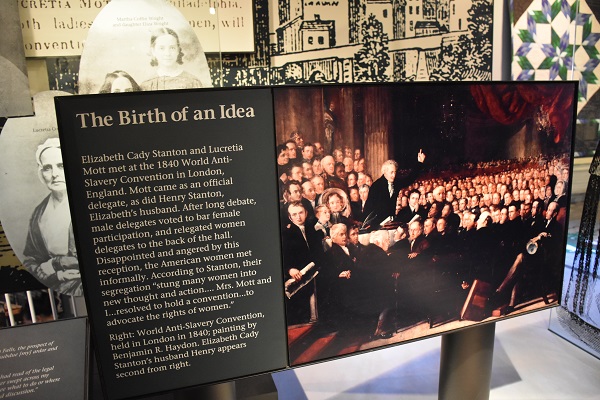
THE ANTI SLAVERY CONVENTION IN LONDON, IN 1840, WHERE WOMEN WERE NOT GIVEN IMPORTANCE – ELIZABETH CADY STANTION FELT INSULTED AND WANTED TO START WOMENS RIGHTS CONVENTION
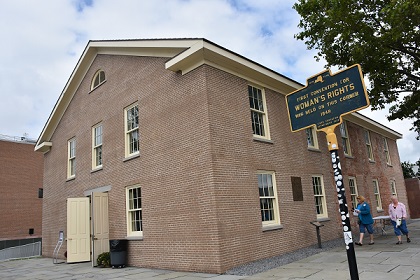
WESLEYAN CHURCH – SENECA FALLS, NY, WHERE THE FIRST WOMEN’S RIGHT CONVENTION WAS HELD 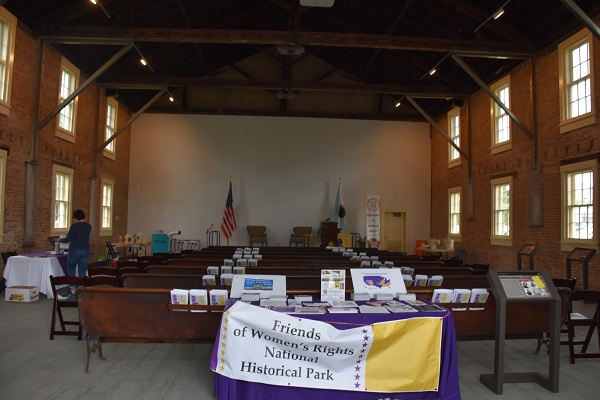
WESLEYAN CHURCH – SENECA FALLS, NY, WHERE THE FIRST WOMEN’S RIGHT CONVENTION WAS HELD
PICTURES BELOW ARE FROM WOMEN’S RIGHTS MUSEUM – SENECA FALLS – THERE IS ALSO A WOMENS HALL OF FAME IN SENECA FALLS – MANY WOMEN INCLUDING ASTRONAUT EILEEN COLLINS ARE HONORED THERE
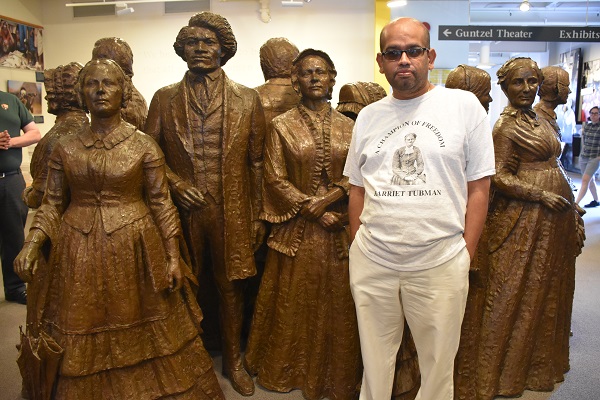
WOMENS RIGHTS MUSEUM – SENECA FALLS 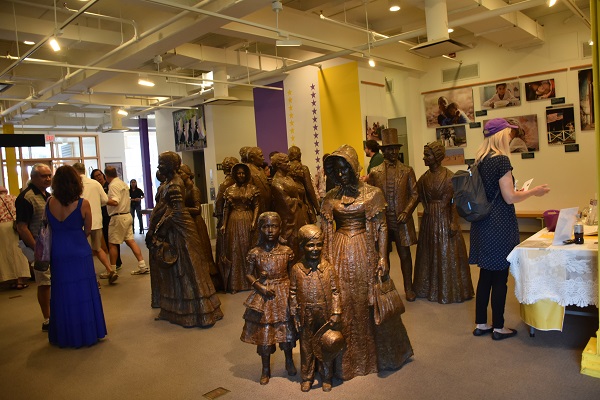
WOMENS RIGHTS MUSEUM – SENECA FALLS
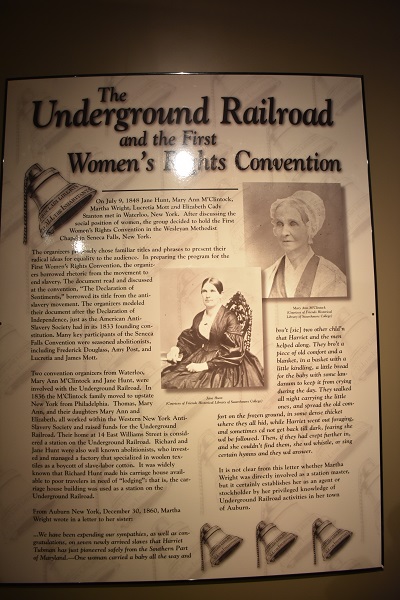
WOMENS RIGHTS MUSEUM – SENECA FALLS 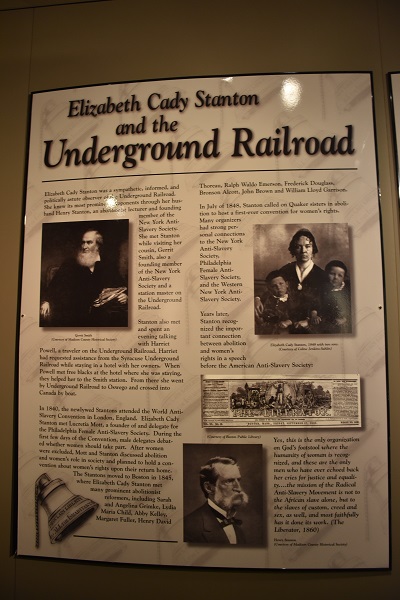
WOMENS RIGHTS MUSEUM – SENECA FALLS
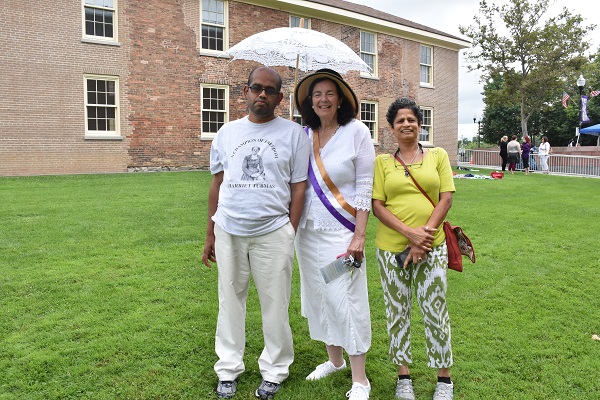
WITH GREAT GARND DAUGHTER OF ELIZABETH CADY STANTION – IN 2017, THE 100 YEAR CELEBRATION OF NY WOMENS RIGHTS 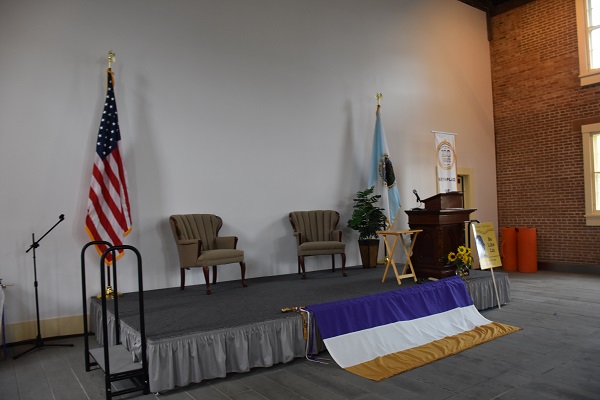
WESLEYAN CHURCH
PICTURES BELOW ARE FROM BELMONT HOUSE – WASHINGTON DC – WOMEN’S EQUALITY NATIONAL MONUMENT – HONORING LATER LEADERS SUCH AS ALICE PAUL
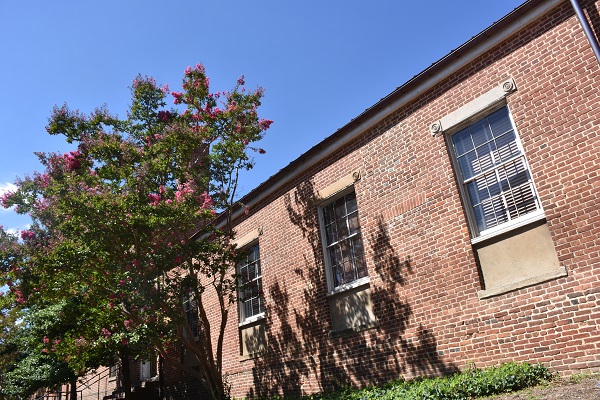
BELMONT HOUSE 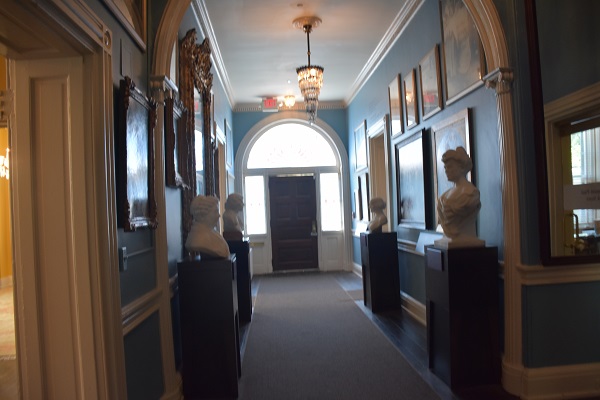
BELMONT HOUSE HALL
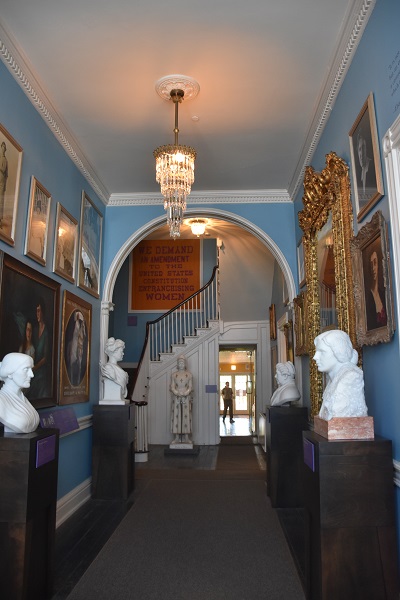
BELMONT HOUSE HALL 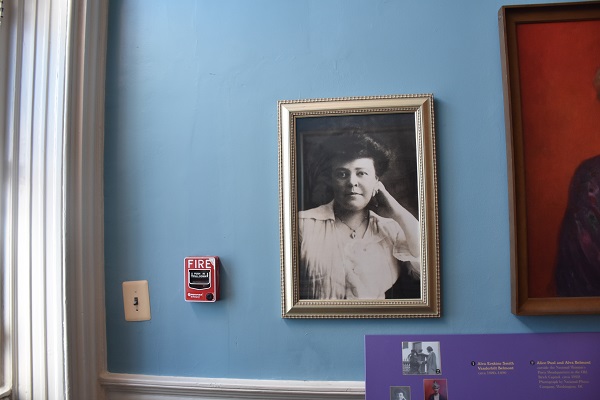
ALICE PAUL PORTRAIT – BELMONT HOUSE
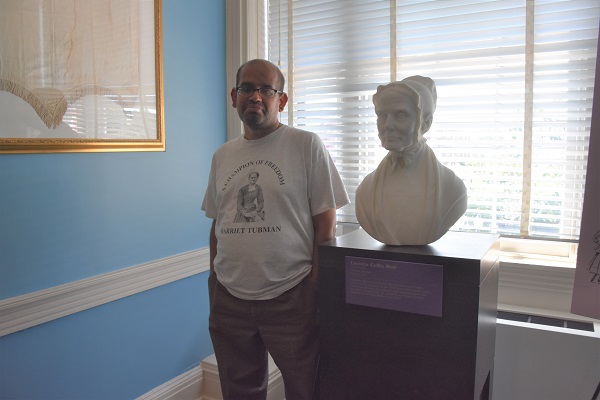
LUCRETIA MOTT AND BHARAT – BELMONT HOUSE HALL 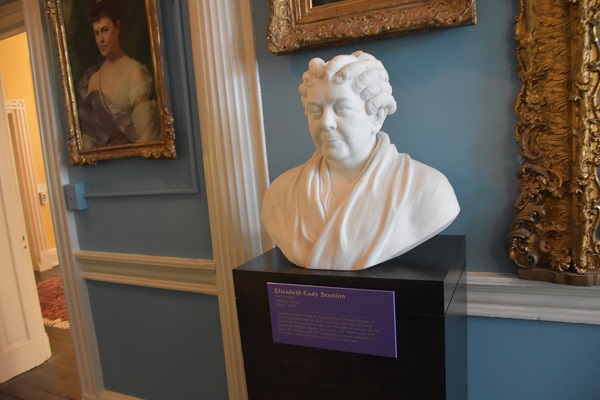
ELIZABETH CADY STANTON BUST – BELMONT HOUSE HALL
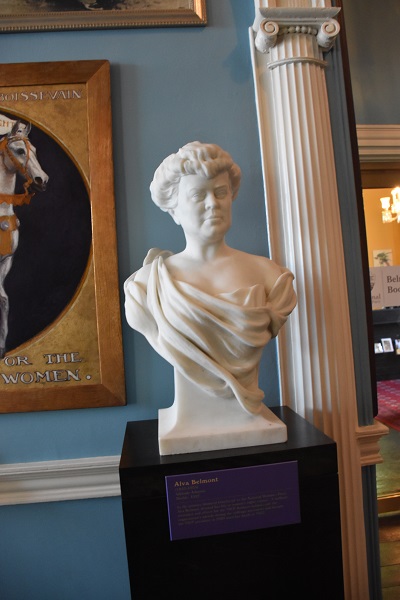
ALICE BELMONT STATUE- BELMONT HOUSE 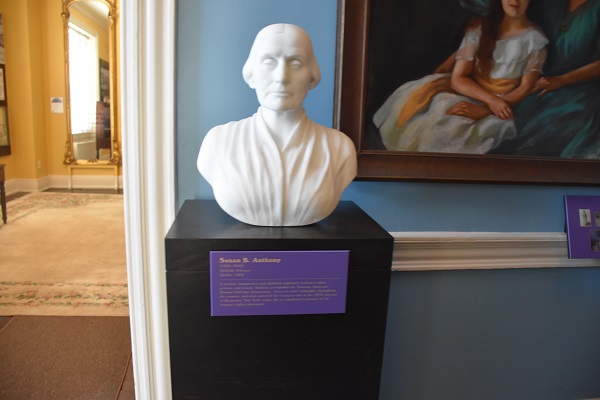
SUSAN B ANTHONY BUST – BELMONT HOUSE
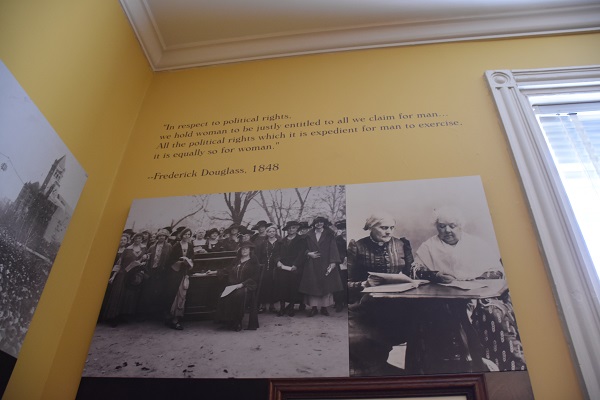
WOMENS RIGHTS MUSEUM – DURING WOODROW WILSON TIME
WASHINGTON DC
WOMENS RIGHTS MUSEUM – DURING WOODROW WILSON TIME
WASHINGTON DC
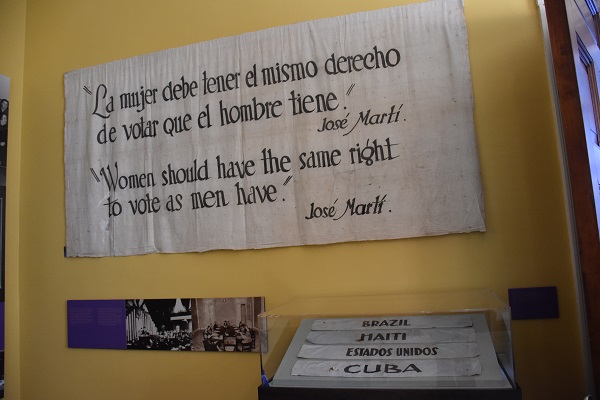
WOMENS RIGHTS MUSEUM – WASHINGTON DC 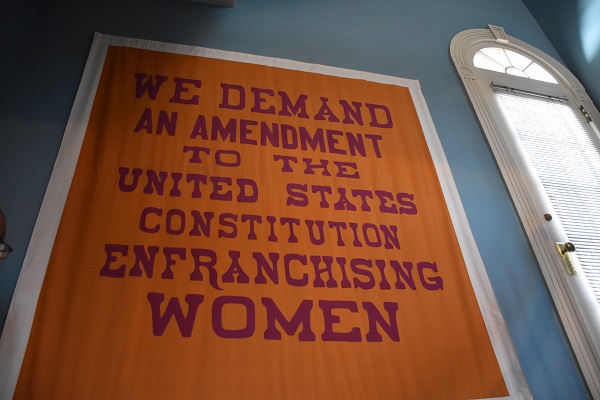
WOMENS RIGHTS MUSEUM – WASHINGTON DC
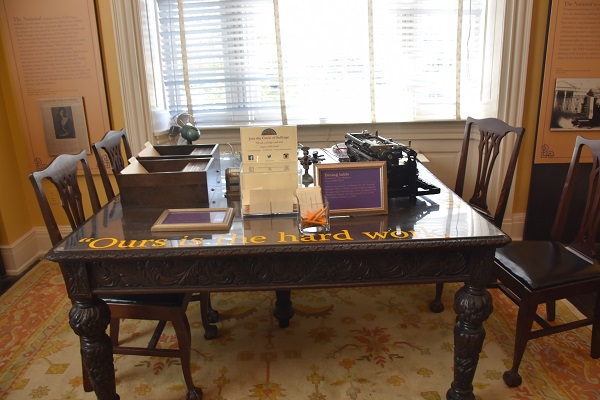
WOMENS RIGHTS MUSEUM – WASHINGTON DC 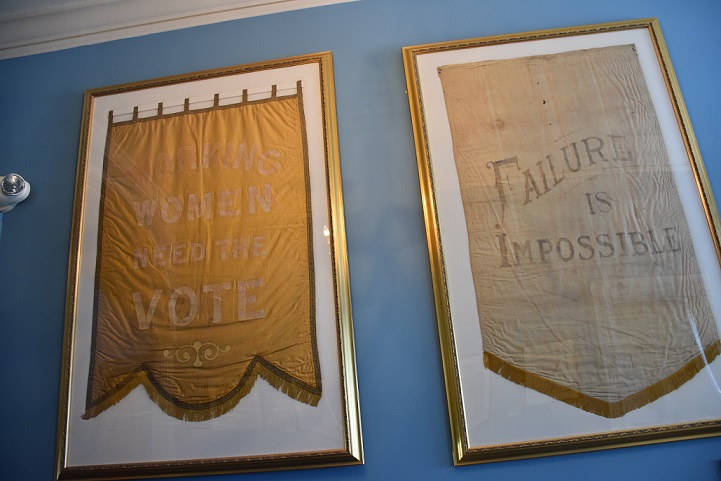
WOMENS RIGHTS MUSEUM – WASHINGTON DC